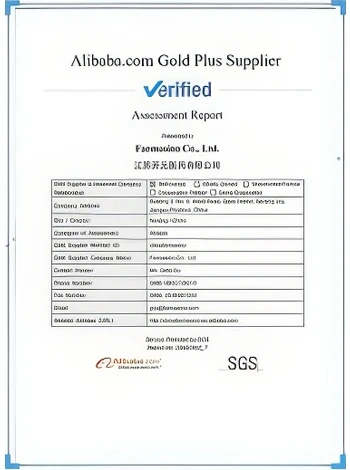



chemicals used in waste water treatment
Chemicals Used in Wastewater Treatment An Overview
Wastewater treatment is a crucial process in modern environmental management. With increasing urbanization and industrial activities, the volume of wastewater generated has surged, necessitating effective treatment methods to safeguard public health and ecological balance. Central to these treatment processes are various chemicals that play vital roles in the purification, stabilization, and remediation of wastewater. This article explores the types of chemicals commonly used in wastewater treatment, their functions, and their significance in achieving clean water.
1. Coagulants and Flocculants
One of the primary stages in wastewater treatment involves the removal of suspended solids, which can hinder water clarity and quality. Coagulants, such as aluminum sulfate (alum) and ferric chloride, are commonly added to wastewater to destabilize particles. These chemicals neutralize the charges on suspended materials, allowing them to clump together into larger aggregates, known as flocs. Once formed, these flocs can be removed via sedimentation or filtration.
Flocculants, often polymers, further aid this process by enhancing floc formation and promoting the settling of particles. By increasing the efficiency of solid-liquid separation, coagulants and flocculants play a crucial role in clarifying wastewater and reducing the burden on subsequent treatment stages.
Disinfecting wastewater is vital in preventing the spread of pathogens and protecting public health. Chlorine, one of the oldest and most widely used disinfectants, effectively kills bacteria, viruses, and other microorganisms. However, chlorine can form harmful by-products, leading to concerns over its usage. As a result, alternatives like ozone and ultraviolet (UV) light are increasingly employed. Ozone, a powerful oxidant, not only disinfects but also reduces the concentration of dissolved organic materials. UV disinfection, on the other hand, utilizes high-energy light to inactivate pathogens without introducing chemicals into the water, making it an environmentally friendly option.
3. pH Adjusters
The pH level of wastewater can significantly influence the efficiency of treatment processes. Acidic or alkaline conditions can affect the solubility of metals and other contaminants. Chemicals like sulfuric acid or sodium hydroxide are frequently used to adjust pH levels. Monitoring and controlling pH is essential for optimizing the performance of coagulants, disinfectants, and other treatment chemicals, ensuring that the wastewater is treated effectively.
chemicals used in waste water treatment

4. Nutrient Removal Chemicals
In many cases, wastewater contains excess nutrients, primarily nitrogen and phosphorus, which can lead to eutrophication in receiving water bodies. To combat this issue, chemicals like sodium nitrate, ammonium sulfate, and ferrous sulfate can be added to facilitate nutrient removal processes. These chemicals help promote biological uptake of nutrients or chemically precipitate them, effectively preventing their discharge into the environment and protecting aquatic ecosystems.
5. Sludge Conditioning Agents
The treatment process generates sludge, a by-product containing a mixture of organic and inorganic solids. Proper management of sludge is essential to ensure compliance with environmental regulations and minimize disposal costs. Chemicals such as lime and various polymers are used to condition sludge, which improves its dewatering properties and reduces its volume. This stage is crucial for any treatment facility, as efficient sludge management can significantly reduce operational costs and environmental footprint.
6. Emerging Technologies and Sustainable Practices
As the demand for more efficient and environmentally sustainable wastewater treatment increases, researchers and industries are exploring new chemicals and technologies. Innovations such as bio-based coagulants, advanced oxidation processes, and integrated approaches for nutrient management are gaining traction. These approaches not only enhance treatment efficacy but also reduce reliance on traditional chemicals, aligning with global sustainability goals.
Conclusion
The use of chemicals in wastewater treatment is indispensable for ensuring that water is safe for discharge and reuse. From coagulants and disinfectants to pH adjusters and nutrient removal agents, each chemical plays a unique role in the multifaceted process of treating wastewater. As we confront growing environmental challenges, continued research and innovation in this field are essential for developing effective, sustainable solutions that protect public health and the environment. The future of wastewater treatment will rely on a delicate balance of chemical application and environmental stewardship, paving the way for a cleaner, safer world.
-
Why Sodium Persulfate Is Everywhere NowNewsJul.07,2025
-
Why Polyacrylamide Is in High DemandNewsJul.07,2025
-
Understanding Paint Chemicals and Their ApplicationsNewsJul.07,2025
-
Smart Use Of Mining ChemicalsNewsJul.07,2025
-
Practical Uses of Potassium MonopersulfateNewsJul.07,2025
-
Agrochemicals In Real FarmingNewsJul.07,2025
-
Sodium Chlorite Hot UsesNewsJul.01,2025










